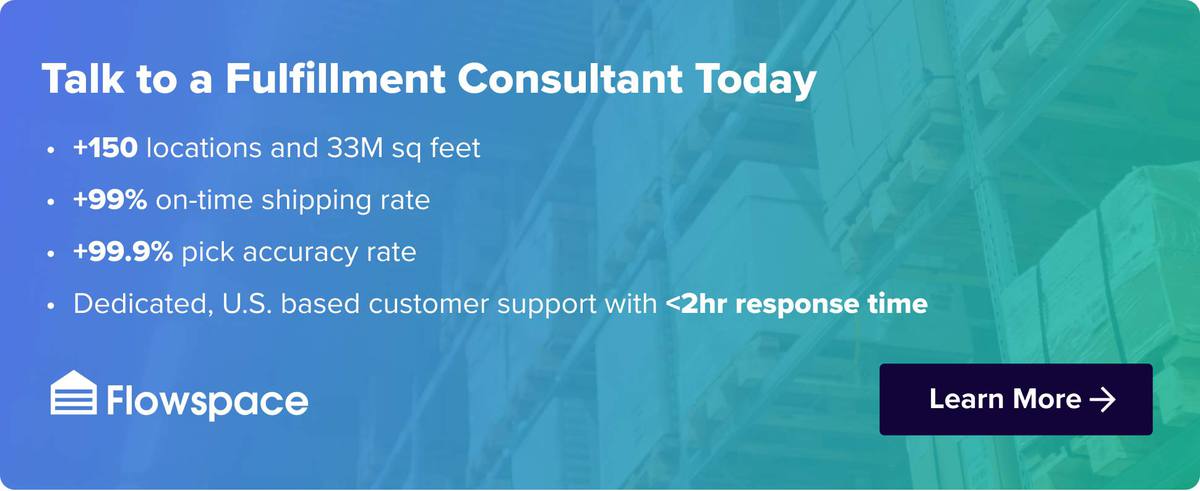
Physical distribution in supply chain management is how retailers make their products available to the consumer. It’s also the weakest link in the supply chain, and a major headache for distribution managers, warehouse coordinators, and customer service departments.
Fortunately, this logistics optimizations guide has everything you need to master physical distribution, and ship your goods to market in the fastest, most cost-effective way possible.
What is Physical Distribution?
Physical distribution in supply chain management deals with the series of actions that moves final products from production to the consumer. The channels involved include warehousing, inventory control, order processing, materials handling, transportation, and customer service. Physical distribution and the ability to get a product to a consumer quickly and economically has a direct impact on customer satisfaction. By storing goods in convenient locations, and by creating fast, reliable means of moving those goods, small business owners can help assure continued success in a rapidly changing, competitive global market.
What are the Components of Physical Distribution
Physical distribution is a supply chain forecasting and management term best viewed as a system of distribution channels linked together for the efficient movement of products. These components are interrelated, meaning decisions made in one area affect the relative efficiency of others.
Customer Service
Customer service in supply chain management refers to the precisely-defined standard of customer satisfaction that a small business provides to its customers. Once a standard is set (ex: 60% of all shipments delivered to customers within 48 hours of ordering) a physical distribution system is then set up to reach that goal at the lowest possible cost.
Transportation
Transportation is an indispensable component of distribution management. Different transportation modes (LTL, Parcel, Air Freight) enables retailers to make their goods and services available in a store, wholesaler, or at the customer’s doorstep.
From a cost perspective, U.S. companies spend trillions on shipping costs, amounting to nearly 25-40% of your average retailer’s total distribution costs. Fortunately, a retail organization can use anyone, or a combination of the following transport modes to offset some of the overall shipment cost:
- Truckload – The favored shipping method for most enterprises in North American is trucking. Carrying primarily manufactured products (as opposed to bulk materials), trucks offer fast, frequent, and economic delivery to more destinations in the country than any other logistics option. Trucks are particularly useful for short-distance shipments, and they offer relatively fast, consistent service for both large and small shipments.
- Less-Than-Truckload (LTL) – The transport of freight that does not require the entire space of a full truckload. Because each truck contains shipments from multiple clients going to multiple similar locations, oftentimes it takes longer for LTL freight to arrive.
- Intermodal – Small business owners often take advantage of intermodal shipping arrangements that utilize a combination of rail and truck transportation for specific segments of the transport. Overall costs are often significantly lower under this arrangement than with single-mode transport.
- Air Freight – Due to the relatively high transporation cost of air freight, small businesses typically use air only for the movement of valuable or highly-perishable products. Owners can sometimes offset the high cost of air transportation with reduced inventory-holding costs and the increased business that may accompany faster customer service.
- Parcel – Package delivery or parcel delivery is the delivery of shipping containers, parcels, or high value mail as single shipments. The service is provided by most postal systems, express mail, private courier companies, and less than truckload shipping carriers.
- Ocean Freight – The transport of goods by sea via shipping containers. Ocean freight is the most common mode of transport used by importers and exporters in the country, and around the world.
Warehousing
The warehousing component of physical distribution refers to the process of receiving inbound shipments, storing merchandise, breaking down bulk materials, and ecommerce fulfillment for delivery to the customer.
A Warehouse distribution centers generally keep goods for longer periods, whereas fulfillment centers operate as central distribution locations for quick shipments of the finished product to customers and retail locations.
Order Processing
Order processing is a physical distribution function that directly affects the ability of a retailer to meet the customer service standards defined by the owner. Assuming the order processing system is efficient, the owner can avoid the costs of premium transportation or high inventory levels.
Order processing methods often vary from industry to industry, but the basic idea is to deliver the order as the customer expects, in the way they expect it, and when they expect it to be there. Thus, accuracy plays a vital role in successful order processing, as do procedures that minimize the order processing cycle.
Inventory Control
Inventory control is a major component of any physical distribution system. Inventory control is used to keep inventories in a desired state while continuing to adequately supply customers. Costs include funds invested in inventory, depreciation, and possible obsolescence of the goods.
Materials Handling
Another important component of a small business physical distribution system is material handling. Material handling comprises all of the activities associated with moving products within a production facility, warehouse, and transportation terminals. In the case of chain retailers, raw materials and finished goods are shipped from a common warehouse to various store locations.
Why Is Physical Distribution Important
Physical distribution is important because it comprises the final steps a business takes before they put their product in the hands of their customer. That’s why so many businesses invest in a third party logistics provider to ensure their physical distribution is handled with care.
Contact Flowspace today to try our inventory management and fulfillment software that streamlines physical distribution, and better accommodates fluctuating supply and demand throughout peak seasons and volatile market conditions. Request more information to see how Flowspace can help you with your business agility.







